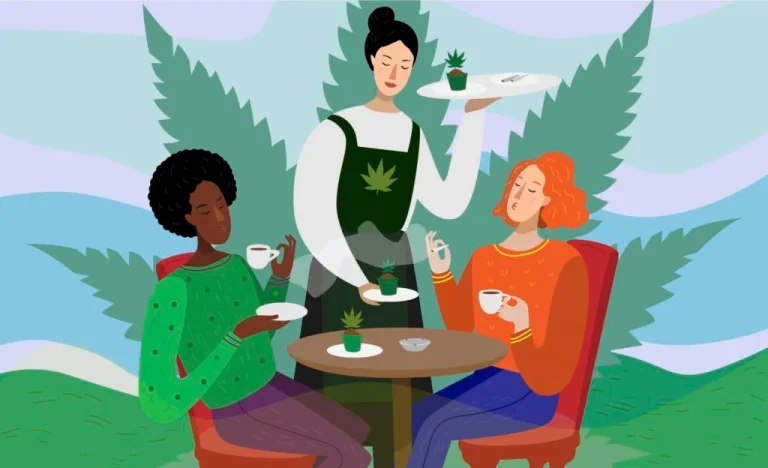Table of Contents
ToggleWhat are the chances you’ve ever debated the difference between indicas and sativas? It is one of such discussions that are hard to escape when you become a cannabis connoisseur. Your friends tell you how they feel differently when using a particular strain that makes you feel otherwise. The budtender asks you what you are looking for at the dispensary, then goes ahead to school you on how indica and sativa differ from each other and how the hybrid strain blends their effects.
But honestly, do all these really matter? Experiences differ. Maybe you have been disappointed a few times when you purchased an indica strain with hopes of getting relaxed, but all you got was energized paranoia. Yet, testimonies from others indicate that most people felt relaxed when they took the same product.
When you pick a strain over the other, are you taking something different from the other? If yes, at what point do the differences between varying marijuana products occur?

Indica Vs. Sativa: The Scientific and Historical Context
Famous French biologist and taxonomist Jean-Baptiste Lamark initiated the common cannabis dichotomy, used in the marijuana industry today as a simple means of differentiating strains. At that time, Europeans had already classified cannabis as Cannabis sativa, and it was what scientists and users in the cold region were familiar with. However, when the French naturalist Pierre Sonnerat sent over some hemp samples he collected in India, Lamark noted some differences in the shape of their leaves, stems, sexual organs, and their resin composition. Based on these differences, Lamark concluded that the species varied and named them Cannabis indica – Indian cannabis.
In contrast to the European sativa, he described indica as having narrower alternating leaves and being a smaller plant with a firm stem that makes it unsuitable for fiber extraction. Consequently, he also stated that effects vary across both species, creating a dichotomy that stuck to date.
The Difference Between Indicas and Sativas: An Erroneously Perceived Taxonomic Dichotomy
Not long after Lamark classified what is assumed to be different species, other scientists started debunking the differences. William O’Shaughnessy, a physician and pharmacologist, attributed the highly resinous content of indica to be due to climate conditions where it is grown initially.
Scientists then and today affirm that despite the physical differences, all variations of cannabis exist under one breed – Cannabis sativa L. The outcome and effects of whichever variation you use are dependent on the climatic and soil conditions of where the cultivator grew the plant.
Although botanists indicated that we have only one breed of cannabis, medical professionals found it convenient to stick with the false dichotomy as a means to present the healing properties of cannabis to the public.
As molecular biology advanced and new biotechnology emerged, scientists found even more evidence that Lamark’s indica and sativa dichotomy is too simplistic and erroneous. Not only did researchers find that where a cannabis plant grows can change its effect and flavor, but scientists also discovered that environmental factors could affect how a person who consumes a marijuana product reacts to it.
To get a clearer picture, let’s say that someone gave you and a friend seeds from a particular cannabis plant to cultivate. You plant yours in Montana plains, and your friend grows theirs on one of the rocky mountains of Utah. There is a chance that the emerging plants would have varying physical traits and some differences in the effects. Also, environmental conditions like sunlight or being at a high altitude while consuming it can affect how your body reacts to it.
Should The Difference Between Indicas and Sativas Variants Found in Dispensaries Bother You?
Put simply, no.
The problem with the assumed differences is that the marijuana product may not give you the probable effect you are expecting. Maybe you find yourself itching for a hardcore punk concert after taking a supposed indica product that ought to make you relax. Otherwise, it would be advisable to always bear in mind that all cannabis variations are from a single cannabis breed. And that variations result from various lab blends and environmental factors, which also influence the flavor and effects the plant gives.
Next time you face any question in the lines of “what’s the difference between indica and sativa marijuana,” reiterate that whatever differences that could be discussed are from an outdated and inaccurate classification. So, you shouldn’t get too upset by the assumed differences.
What Are the Compounds That Influence the Effects of Cannabis Strains?
If you really intend to delve into the difference in effects of cannabis, then you have to dive into the molecular compositions of cannabis variations. Elements such as cannabinoids, terpenes, and flavonoids are the factors that actually impact cannabis effects.
Terpenes
Generally, terpenes are aromatic compounds you can found in many plants such as lavender, Spanish sage, citruses, and cannabis with characteristics scents. Various types of terpenes, such as limonene, terpinolene, myrcene, etc., can be found individually or in combination with others in cannabis plants. Though not scientifically ascertained, the effects of cannabis terpenoids implicitly revolve around their properties as bioactive compounds and their entourage effects.
Cannabinoids
Scientists have found dozens of cannabinoids in the cannabis plant. These cannabinoids are the primary chemical basis upon which the psychoactive effects of cannabis are determined. Two of the most prominent cannabinoids are THC and CBD.
- THC (Δ9-tetrahydrocannabinol) – the most psychoactive element, inducing intoxicating feelings of excitement, hunger, etc. Marijuana products with this as its dominant element are often sought by patients wishing to treat depression, pain, insomnia, anxiety, etc.
- CBD (cannabidiol) – is a non-psychoactive compound, often dominant in marijuana products that produce more supportive, therapeutic effects. Patients who dislike the psychoactive effects of THC and wish to get calm relief from their pain or anxiety may gravitate towards cannabidiol.
Medical Marijuana Strains: What Really Matters
The key takeaway from this post is that your concern should not be on the difference between indicas and sativas. Instead, when you seek recommendations from a budtender or pharmacist, you should emphasize knowing the product’s compounds. Is it CBD or THC-dominant? What is its terpene composition? What are the chemical/biological variations you should know? What strains are best for your condition?
Do you know what else matters? Your medical marijuana card. At Elevate Holistics, we are not just an online platform that provides you a state-authorized MMJ card. We go the extra length to ensure that process is very straightforward, speedy, and industry-standard compliant– all at a price unmatched by any other service provider, too. Interested in getting started? Just click the button down below.







